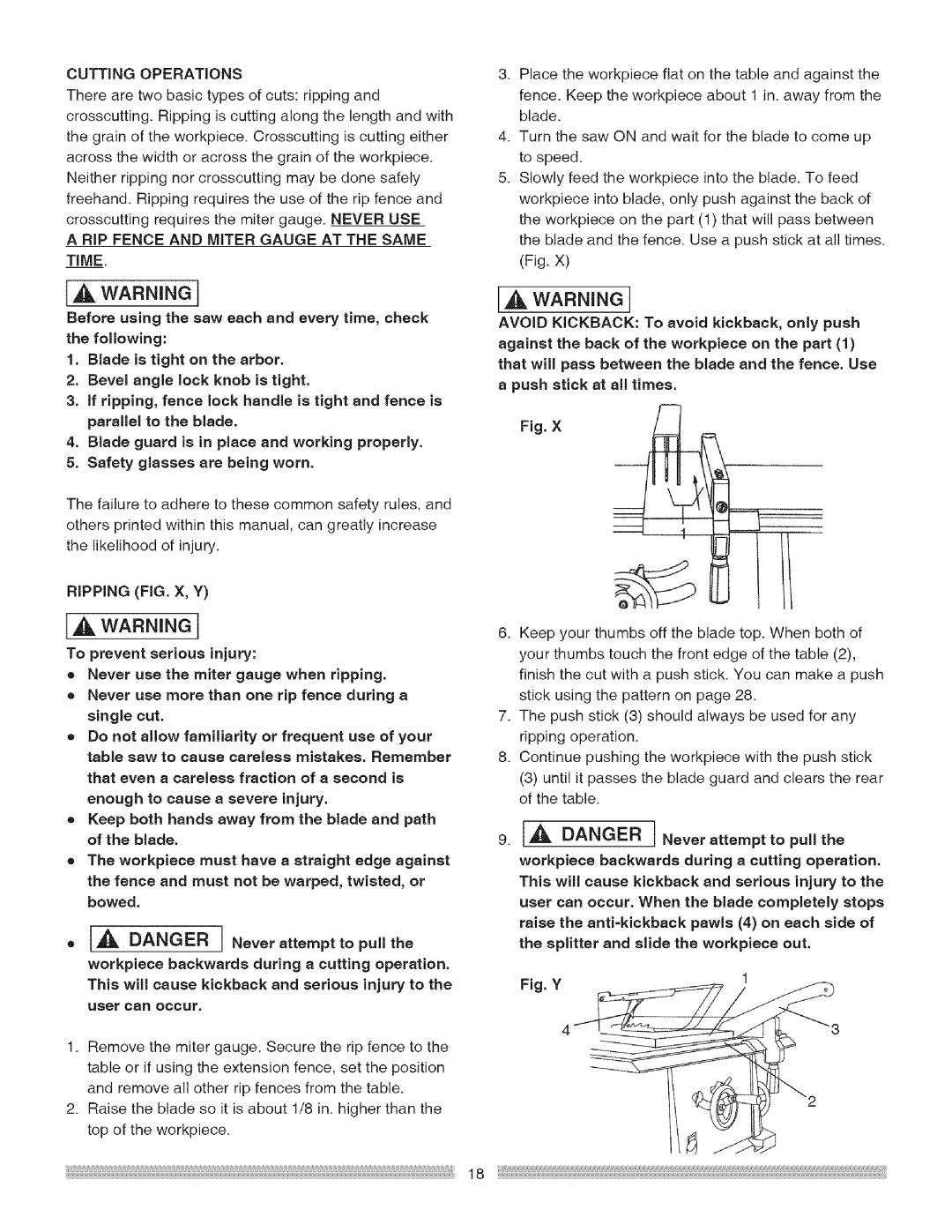137218030001, 137.218030 specifications
The Craftsman 137.218030, also known as the 137218030001, is a standout tool in the realm of woodworking and home improvement. This model is primarily recognized for its versatility and reliability, making it a popular choice among both professionals and DIY enthusiasts. Designed with a keen focus on user-friendliness, the saw incorporates several key features and technologies that elevate its performance.One of the most significant aspects of the Craftsman 137.218030 is its powerful motor. With an impressive horsepower rating, this tool ensures efficient cutting through various types of materials, including hardwood, softwood, and composites. The motor is also designed to minimize vibration, resulting in smoother operation which enhances accuracy and prolongs the life of the tool.
In terms of design, the Craftsman 137.218030 boasts an adjustable bevel capability, allowing users to make precise angle cuts for more complex projects. The bevel range provides flexibility for a variety of applications, enabling craftspeople to execute intricate designs and professional-quality finishes with ease. Additionally, the adjustable cutting depth feature is instrumental for users seeking different material thicknesses, enhancing the tool's adaptability and usability.
Another notable feature is the integrated safety mechanisms. The Craftsman 137.218030 comes equipped with a blade guard that helps prevent accidental contact with the cutting blade. This is crucial for promoting safer operation during use. The trigger lock feature also adds an extra layer of security, preventing unauthorized use and ensuring that the saw only activates when intended.
The versatility of the Craftsman 137.218030 is further enhanced by its compatibility with a wide range of accessories, including different blades and attachments. This flexibility enables users to switch from cutting to sanding or even polishing with relative ease, thus making it a multi-functional tool for various projects.
Moreover, the Craftsman brand is known for its commitment to quality, and this model is no exception. Built to withstand the rigors of daily use, the durability of the 137.218030 ensures that it remains a dependable addition to any workshop. Overall, the Craftsman 137.218030,137218030001 combines robust performance, advanced technology, and user-centric features, making it an excellent choice for anyone looking to elevate their crafting experience. Its blend of power, safety, and versatility truly encapsulates what modern tools strive to achieve.

